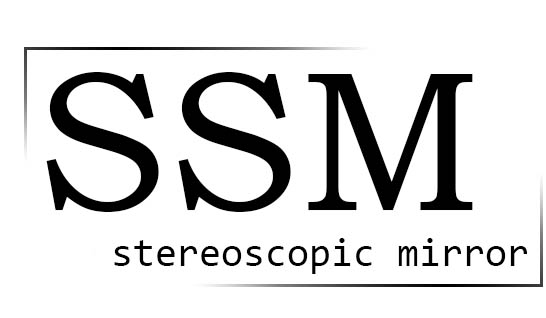Have you ever wondered about the connection between lasers and beamsplitter glass? Beam splitters are a crucial component in optical systems and are widely used in various applications. They are used to split a single beam of light into two or more beams, which can be directed towards different directions.
Lasers have become an indispensable tool in modern technology, used in everything from manufacturing to medicine. However, their effectiveness depends on the quality of the equipment used, including the beamsplitter glass. With the right glass, lasers can achieve incredible accuracy and precision, while the wrong glass can lead to inefficiencies and errors.
In this article, we will explore the fascinating world of lasers and beamsplitter glass. We’ll discuss the science behind how lasers work, the importance of beamsplitter glass, and how the two work together to create amazing results. Whether you’re a scientist, engineer, or simply curious about the technology around you, this article will provide valuable insights into the world of lasers and beamsplitter glass.
Why Are Lasers and Beamsplitters Used?
One of the primary uses for beam splitters is in laser sampling and feedback loop components. In this application, the beam splitter glass is used to sample a small fraction of the laser beam. This fraction is then measured to keep the laser system within a tight range of performance. This is crucial in applications where precise control of the laser beam is required.
Another primary use for beam splitters is as the main functional component in optical systems. In this application, the beam splitter creates beams that go through different channels, such as in an interferometer. It can also be used to create identical channels to increase throughput, as in the case of industrial or aesthetic laser processes.
In such cases, splitting into more than two beams is highly desirable. Diffractive beam splitters are often preferred in these applications as they can split the beam into any number of desired channels. This allows for greater flexibility in the design of the optical system and can lead to more efficient and effective performance.
Beam splitters are essential components in optical systems and are used in a wide range of applications. They can be used for laser sampling and feedback loop components or as the main functional component in optical systems. Diffractive beam splitters are often preferred in applications where splitting into more than two beams is necessary. Understanding the different applications of beam splitters can help in the design and implementation of optical systems for various purposes.
Lasers and Beamsplitter Glass
Beam splitters are a fundamental element in optical systems that are used to divide a single light source into two separate beams. They are essential components in many fields such as medical imaging, telecommunications, and scientific research. In this article, we will explore what beam splitters are, how they work, and their importance in optical systems.
Beam splitters are optical devices that are used to divide a single light source into two or more beams. They are commonly used in optical systems to direct light to different parts of the system or to combine light from different sources. Beam splitters can be made from a variety of materials, such as glass, quartz, and plastic, and can be shaped as a cube or a plate.
Beam splitters work by using a partially reflective surface to divide the light source into two beams. When light hits the surface, some of it is reflected and some of it is transmitted through the surface. The amount of light that is reflected or transmitted depends on the angle of incidence, the polarization of the light, and the properties of the surface coating.
There are several types of beam splitters, including polarizing beam splitters, dichroic beam splitters, and non-polarizing beam splitters. Polarizing beam splitters are used to separate light based on its polarization, while dichroic beam splitters are used to separate light based on its wavelength. Non-polarizing beam splitters, also known as beam combiners, are used to combine two or more light sources into a single beam.
Beam splitters are an essential component in many optical systems, including microscopes, telescopes, and cameras. They are also used in medical imaging, such as endoscopy and laparoscopy, to direct light to different parts of the body. In telecommunications, beam splitters are used to divide and combine light in fiber optic networks. In scientific research, beam splitters are used in experiments that require multiple light sources or detectors.
What are dichroic beamsplitters?
What are Dichroic Beamsplitters?
Dichroic beamsplitters are optical elements that have a cut-off wavelength. They are designed to selectively reflect or transmit light based on its wavelength. Light above the threshold wavelength is transmitted through the beamsplitter, while light below the threshold is reflected. This property makes dichroic beamsplitters useful in applications where selective wavelength filtering is required.
Applications of Dichroic Beamsplitters
Dichroic beamsplitters find applications in a wide range of fields, from microscopy to astronomy. Some of the most common applications of dichroic beamsplitters are:
1. Fluorescence Microscopy: In fluorescence microscopy, dichroic beamsplitters are used to separate excitation and emission wavelengths. They are placed between the light source and the sample to reflect the excitation wavelength and transmit the emission wavelength.
2. Spectroscopy: Dichroic beamsplitters are used in spectroscopy to separate different wavelengths of light. They are used in instruments such as spectrometers and monochromators to separate the different wavelengths of light.
3. Astronomy: In astronomy, dichroic beamsplitters are used in telescopes to separate different wavelengths of light. They are used in instruments such as spectrographs to separate the different wavelengths of light.
4. Laser Systems: Dichroic beamsplitters are used in laser systems to separate different wavelengths of light. They are used in instruments such as laser diode modules and laser beam combiners.
Types of Dichroic Beamsplitters
Dichroic beamsplitters are available in different types, based on their design and application. Some of the most common types of dichroic beamsplitters are:
1. Cube Beamsplitters: Cube beamsplitters are made of two prisms that are cemented together. They are used in applications where space is limited.
2. Plate Beamsplitters: Plate beamsplitters are made of a single piece of glass. They are used in applications where size is not a constraint.
3. Edge Filters: Edge filters are dichroic beamsplitters that are designed to reflect or transmit light based on the angle of incidence. They are used in applications where angle-dependent filtering is required.

Conventional Beamsplitters
Conventional beam splitters are optical devices that are used to split a single beam of light into two or more beams. They are designed with a partially reflective surface that divides the incoming beam of light into two separate beams. The amount of light that is reflected and transmitted by the beam splitter depends on several factors, including the angle, wavelength, and polarization of the incident light. As such, conventional beam splitters are highly versatile and can be used in a wide range of applications, including microscopy, spectroscopy, and laser systems. However, their performance can be limited by factors such as optical alignment, surface quality, and the spectral range of the device.
Plate Beamsplitters
What are Plate Beam Splitters?
Plate beam splitters are thin windows that are coated with a semi-reflective coating. They are designed to split a beam of light into two separate beams, one that is transmitted through the window and the other reflected. These beams can be used in various applications, such as laser systems, microscopy, and spectroscopy.
Properties of Plate Beam Splitters
Plate beam splitters are optimized for specific angles of incidence, usually 45 degrees. They can be manufactured with a variety of transmission and reflection ratios, which allows them to be customized for different applications. They are also not too wavelength-dependent, which limits the amount of chromatic aberration they induce.
Limitations of Plate Beam Splitters
Although plate beam splitters are useful, they do have some limitations. Due to their thinness, the transmitted and reflected beams have different optical path lengths, which can result in some lateral displacement. Additionally, a “ghost” reflection can be created on the second surface of the plate. To prevent this, many manufacturers add a small angle in the glass, making them as wedges instead of perfectly parallel windows so that the ghost reflections get deflected out of the main beam’s path.
Cube Beamsplitters: How Do Cube Beamsplitters Work?
Cube beam splitters are a type of optical component that is commonly used in many applications in the fields of science and engineering. They are designed to split a beam of light into two separate beams, allowing for the measurement and analysis of different properties of the light.
Creating a cube beam splitter involves splitting a cube of transparent material in two diagonally. This can be done using a variety of materials, including glass, quartz, and other optical materials. Once the cube is split, a semi-reflective coating is applied at the juncture between the two halves. This coating allows for a semi-reflective mirror of negligible thickness, which eliminates ghost images and image displacement.
One of the key advantages of cube beam splitters is their durability. The reflective surface is safely enclosed in the middle of a cube, which makes them well-suited to more rugged environments. They are also resistant to damage from handling and other environmental factors, which makes them ideal for use in scientific and industrial applications.
However, cube beam splitters do have some limitations. They tend to be less resistant than plate beam splitters for high optical powers, which means that they may not be suitable for use in applications where very high power levels are involved. Additionally, they are usually not suggested when non-collimated beams are at play, as the splitting of the beam can cause unwanted effects.
Despite these limitations, cube beam splitters are still an important tool for many applications in the fields of science and engineering. They are widely used in applications such as spectroscopy, microscopy, and laser-based imaging, among others. With their unique properties and durability, cube beam splitters are sure to remain an important tool in the optical industry for years to come.
